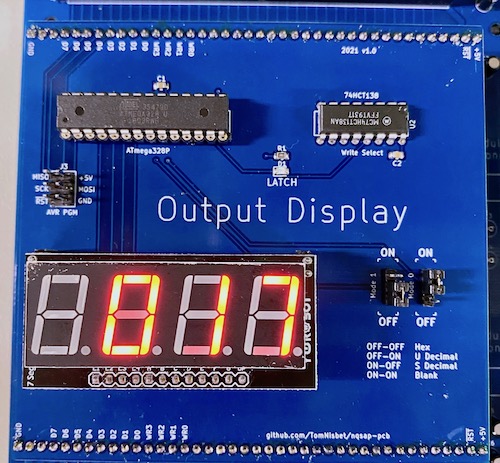Output Register
The NQSAP uses a different approach to the output display than the Ben Eater SAP-1. Instead of driving an LED display with a sequencer and an EEPROM, an ATmega328 is used. The Atmega replaces not only the EEPROM and counter hardware, but it also takes care of the buffering, eliminating the 74ls173 registers.
The board includes its own address decoding hardware, so it has no dependencies on other boards and requires no interconnet. There is a space to populate an AVR connector to flash new code onto the ATmega328P.
The output register can be jumpered to display its result in one of three modes:
- hex (00 to ff)
- signed decimal (-128 to 127)
- unsigned decimal (0 to 255)
The output register hardware is exteremely minimal due to the use of segment multiplexing instead of digit multiplexing. The removes the need for transistors or other drivers so that the complete hardware consists of just the Atmege328, the display, and four resistors.
Because the design is useful outside of the NQSAP-PCB, the Output Register is documented in its own repository. The minimal-hardware 7 segment display repository has complete details, including source code.
It is a bit of a cheat for a TTL computer build to use a microcontroller that has vastly more power than the entire resulting computer. But the 328 version was an interesting design exercise and it can be argued that the display is really more of a peripheral than an integrated part of the computer.
Bill of Materials
- ATmega328P microcontroller
- 74HCT138 3-to-8 decoder
- 4-digit, 7-segment LED display

